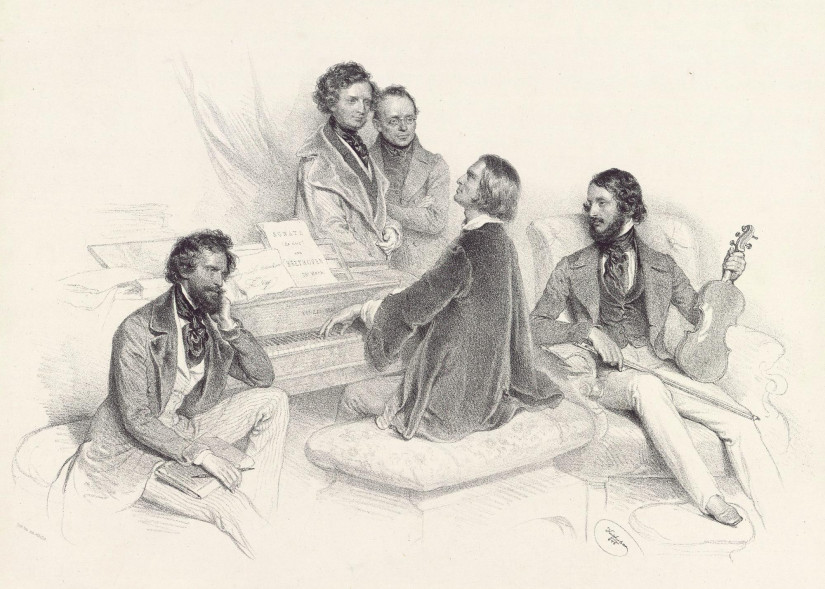A new temporary exhibition in the Liszt Ferenc Memorial Museum and Research Centre: Franz Liszt in Austria
The new international exhibition presents Liszt’s many connections with Austria, exploring the impact of the tradition of the Viennese virtuoso school on his early career, from his childhood in Doborján (now Raiding) throughout his school years in Vienna to the start of his career as a pianist-composer. As a result of an international cooperation of the European Liszt Museums, the exhibition features rarely seen documents and manuscripts.
Starting from Liszt’s birthplace in Doborján (now Raiding), the exhibition presents the composer’s childhood in Burgenland, explores his first concerts in Vienna and examines his acceptance in the Austrian capital’s cultural life, especially by the Gesellschaft der Musikfreunde. As it is shown in our permanent exhibition, members of the Habsburg dynasty already attended his famous concert series in 1838.

Joseph Kriehuber: Ein Matinée bei Liszt (1846)
Our exhibition explores Liszt’s Austrian friendship by evoking Joseph Kriehuber, Kaspar von Zumbusch and Ludwig Bösendorfer, the piano manufacturer. We are emphasizing two composers who influenced greatly Liszt’s career in the early years: Franz Schubert, the songs of whom he transcribed and played in the aforementioned concert series, and Beethoven in relation to the celebrations of his centenary in 1870 and of the fiftieth anniversary of his death in 1877. Visitors can also discover some other important, but little-known figures and composers of Liszt’s life, like his uncle, Eduard von Liszt, Johann von Herbeck or Johann Nepomuk Hummel.
Highlights on display include a manuscript of the orchestral transcript of Erlkönig which is shown for the very first time. In addition to Vienna, the exhibition explores other significant cities from Liszt’s Austrian years, such as Graz, Eisenstadt (called Kismarton at that time), Achensee, Hall in Tirol, Innsbruck, Pottendorf and Salzburg.
As our exhibition is part of an international cooperation, loans from Eisenstadt Landesmuseum Burgenland, Diözesanarchiv Eisenstadt, Raiding Franz Liszt Gesellschaft and Vienna Schottenstift are on display, along with materials landed by the Liszt Academy, Liszt Ferenc Memorial Museum and Research Centre, the Hungarian National Museum, the Stamp Museum, the Kiscell Museum and by the Research Centre for the Humanities Institute for Musicology of the Hungarian Academy of Sciences. Franz Liszt in Austria was curated by Dr Zsuzsanna Domokos and Dr Martin Czernin.


